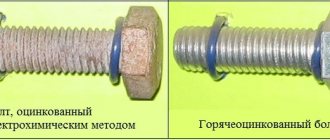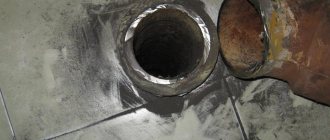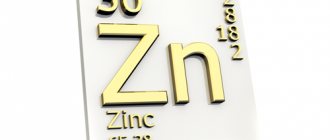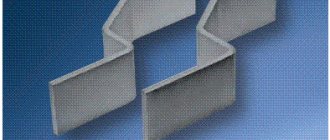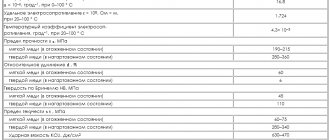In mechanical engineering and metalworking it is impossible to do without precise measuring instruments. Verification plates (measuring planes) and standard rulers are one of the oldest tools used to control the planes of products and parts. In addition to control, the surface plate is used:
- as a surface of zero points (base) for installing measuring instruments when making accurate measurements;
- for setting up (adjusting) measuring instruments;
- when marking blanks and parts.
The industry produces measuring planes ranging in size from 250×250 to 2500×1600 mm in five different designs. The execution number depends on the geometric dimensions of the slab, the material used and the design.
The main regulatory document defining the requirements for testing and lapping plates is GOST 10905-86. According to the state standard, there are 6 accuracy classes of measuring and calibration tools: 000, 00, 0, 1, 2, 3. Additional accuracy classes 4 and 5 are assigned to plates that have been in operation or have undergone repair. The characteristic that determines the accuracy of the measuring planes is the tolerance (deviation), expressed in microns. For slabs of the same class, but of different sizes, the tolerance values are different.
Measuring instruments belonging to accuracy classes 000 and 00 are used in metrology laboratories as standards. Measurements using high-precision surfaces are made at a strictly defined temperature and humidity in the room.
Types of testing plates
For the manufacture of reference measuring planes, three types of materials are used:
Read also: What is the shelf life of all cereals?
- cast iron;
- granite;
- glass.
Glass reference planes were used in the USA and other countries until the 1950s. The widespread use of inexpensive glass measuring instruments was explained by the increased needs of mechanical engineering during the Second World War. Glass calibration planes were made by grinding followed by polishing. The result was products with high metrological characteristics. The advantages of flat surface glass standards include high hardness, chemical resistance, a relatively low coefficient of thermal expansion, and the absence of internal stresses. Unlike cast iron, minor damage to glass products does not result in burrs. The main disadvantage of glass was its fragility. This circumstance became the reason for the rejection of surface plates made of this material.
Historically, the most common type of calibration planes in the USSR and Russia are cast iron calibration plates. The choice of cast iron as a structural material for the manufacture of measuring surfaces is determined by the high strength and relative cheapness of the metal. For the manufacture of measuring plates, fine-grained dense cast iron with a hardness of 150–210 HB is used. Product blanks are cast in molds, the lower part of which is made of steel. The working surface of the slab is formed from below. To reduce the weight of the product and for resistance to deformation, the structure is equipped with stiffeners. The cast billets contain significant internal stresses associated with the crystallization of cast iron. If measures are not taken to eliminate stress, products will become deformed during processing and operation. To relieve internal stresses in the metal, castings are subjected to aging. For natural aging, the workpieces are kept for several weeks or months at normal temperatures before processing. To accelerate aging, cast iron is heated in furnaces to 500 degrees and then slowly cooled.
Surface processing of surface plate blanks is carried out on milling, planing and grinding machines. For accuracy classes 1–3, such processing is usually sufficient. Products are finished with higher precision using scraping and calibration.
Choosing slabs
Finishing plates are made from ordinary cast iron scraped surface plates. In this article we are looking at plates for repairing caliper tools, micrometers, bore gauges, pattern squares and rulers, and the like. Plates for finishing gauge blocks are a little different and we won’t talk about it now (although the principle is the same).
We need to select three slabs measuring 400x400 mm. In good condition, preferably new. Without shells and visible inclusions. The slabs are cleaned, washed and sent for grinding; it is desirable that the surface grinding machine is the most accurate. Then the plates are subjected to artificial aging - annealing in a furnace with gradual heating to ~500 degrees Celsius, and gradual cooling along with the furnace. The operation is long... heating at a rate of 60-70 degrees per hour, holding in the oven for ~1.5 hours... cooling for several hours... Many people neglect this. I myself worked with annealed and non-annealed slabs - there was not much difference.
If you age the slabs using this method, you will have to finish sanding again. The slabs are processed with a file and sandpaper - sharp edges and roughness are removed after casting. Use a file to carefully remove the chamfer along the edge of the upper working side. Then everything is thoroughly washed with gasoline, dried, and the entire underside is painted with oil paint. After this, they begin to grind the finishing plates together.
Additionally: since the slabs are really heavy, and the finishing operation will have to be carried out relatively often, it makes sense to make it somewhat easier to remove the metal layer from above and below using a milling machine. This will not harm us, but it will make our overall work much easier!
Platform classes and sizes
Testing equipment is produced with different accuracy classes. For a new device, the calibration accuracy class is determined by the following indicators:
- 000;
- 00;
- 0;
- 1;
- 2;
- 3.
The requirements for used control plates are not as stringent. Due to slight wear of the mounting surface of the testing equipment, deviations in the accuracy class with an indicator of 4 or 5 are allowed.
The dimensions of the installation platform can vary from 250 x 250 mm to 2500 x 1600 mm. The distinctive properties of a metric instrument include marking with design numbers 1, 2, 3, 4 and 5, which determine the method of surface treatment and design of the instrument. The classes of the surface plate are determined by the norms of permissible deviations for the accuracy of surface treatment, the degree of its roughness and the perpendicularity of the side elements.
Our advantages
- The products manufactured by the plant are of high quality, which is confirmed by many contracts with enterprises of the Russian military-industrial complex
- Development of drawings of slabs with mandatory calculations for strength and deflection according to the customer’s specifications (total load on the slab, concentrated load on the area L/5 x B/5)
- It is possible to carry out topological optimization of the design of mounting plates
- The plant has introduced automation of foundry technology development processes using modern ProCast and LVMFlow programs. This allows castings of mounting plates to be put into production only after all possible casting defects have been eliminated at the design stage, which guarantees the receipt of suitable castings in a short time without any defects, including hidden ones (more details)
- The full production cycle allows us to produce ready-made assembly slabs, starting with the development of foundry technology, modeling the casting process in the ProCast and LVMFlow programs, design and manufacture of pattern equipment based on the resulting modeling results, obtaining suitable castings, heat treatment to relieve internal stresses and mechanical processing.
- Modeling equipment is manufactured on CNC machines with high precision and productivity. There are 6 machines operating in 2 shifts.
- The plant has a wide range of melting furnaces: IST 25 - 2 pieces, IST 15 - 1 piece, DSP-3M2 - 2 pieces, IST 1.5 - 2 pieces, IST 0.75 - 2 pieces. This allows you to produce castings from 0.5 kg to 40 tons
- A large fleet of large flask equipment allows us to produce large-sized castings of mounting plates with dimensions up to 8000 x 5000 x 1000 mm.
- Unlike a large number of iron foundries, it has large heat treatment furnaces (7000 x 7000 x 14000 mm) to relieve internal stress (artificial aging)
- A wide range of machines for precise processing of dimensional parts allows the customer to receive mounting plates in strict accordance with the requirements of the drawing on time
- Large-scale precision longitudinal grinding machines allow grinding the working surfaces of surface plates with a roughness of Ra 0.63 and a flatness tolerance of 0.03 mm (for a surface of 2500x1600mm)
Surface plate: cast iron or granite
Verification slabs today are made, as a rule, from two materials - cast iron and granite. Making a choice is quite difficult and there is a completely logical explanation for this: a cast iron calibration plate and a granite calibration plate practically do not differ in quality and can be used equally successfully in any field. However, many specialists prefer to use granite products in their work, as they have a number of features:
- have a greater margin of safety;
- have highly accurate measurements;
- have minimal wear rates;
- presented in the widest possible range;
- have regulated flatness and roughness indicators;
- have a variable number of supports, which makes their use more convenient;
- have special devices for proper transportation, etc.
Verification plates and cubes: purposes and advantages
- verification;
- assembly of parts and mechanisms;
- carrying out various types of measurements.
GOST 11648-75 quick-release thrust washers. technical specifications (with change n 1)
A calibration plate, the price of which satisfies the needs of the buyer, has the following advantages:
- not subject to corrosion;
- wear-resistant;
- not affected by acids;
- practically independent of temperature;
- has no electrical or magnetic permeability, and therefore does not require demagnetization;
- the surface plane always clearly corresponds to exactly the accuracy class that you prefer, etc.
Test cube
, in turn, is intended for checking right angles or high-quality control over the perpendicularity of certain surfaces under study. The scope of its application is quite wide and not limited, and therefore it is often used for:
- pattern works;
- metrological control;
- to change the settings of various machines in the production field;
- plumbing and assembly work, etc.
It is worth noting that previously it was customary to make calibration cubes from high-quality steel, but such a cube had several disadvantages, the main one of which was its weight, which, given the large size of the cubes, could be beyond the strength of one person. Today in the assortment of our online store you will find a hard stone calibration cube, since such a product has a number of undeniable advantages:
- low coefficient of thermal expansion;
- high hardness;
- not susceptible to corrosion;
- maximum accuracy and minimum error;
- wear resistance, etc.
Many specialists who use products of this type in their work have already managed to appreciate all the prerogatives that can be obtained by using just such cubes and slabs, which you can buy today at a fairly affordable price and on favorable terms.
Test plate
Test plates are used to check and adjust planes, for markings and other purposes. They are made from well-seasoned cast iron. The working surface of the slab, planed and precisely processed by scraping, is flat. [1]
Test plates and rulers are periodically checked using paint standards or the three-plate method. When using the latter method, one should take into account the possible distortion of the plane as a result of the formation of a hyperbolic paraboloid. To eliminate this error, rectangular slabs are checked by applying a control ruler to them diagonally, thereby detecting raised or lowered corners. [2]
Device for marking parts
When producing high-precision parts, a marking plate made of fine-grained cast iron is used to mark the workpiece. The bottom side of the device is equipped with stiffening ribs that provide reliable adhesion to the workbench and protect the device from sagging during mechanical loads. Some models of the marking device may have longitudinal and transverse recesses of 3 mm and a width of 2 mm on the front surface.
To obtain the exact dimensions of the future part, the surface of the plate is treated with graphite powder or paint. The imprint on the workpiece is obtained by close contact of the paint with the surface of the future part. The resulting image is cut out along the marking line with minimal deviation in size, and the precision of the part is achieved using metalworking tools.
The marking plate for spatial and plane markings includes a jack, support pads, adjustable wedges, a cast iron square, double wedges, prisms, and cubes. To align the model, a control scale is used on the surface of the device, which allows you to adjust the position of the upper clamping wedge. After marking is completed, the surface of the slab is cleaned with a soft cloth moistened with kerosene or machine oil.
Metric parameters
A granite calibration slab made of hard material of natural origin is made from varieties of rock: diabase and gabbro with a compression limit of at least 264.0 MPa. Compared to products made of gray metal, the matte granite surface has increased strength, does not reflect light, does not rust, and is not magnetized. The weight and cost of the device depends on the size of the plate and the accuracy class of the measuring scale.
The granite calibration slab is manufactured in the following design: without side grips; with tolerances for deviations along the perpendicularity of the side surface with respect to the installation plane; mutual perpendicularity of the side surfaces, with side grips. The device includes:
- pens;
- adjustable supports;
- lid;
- user manual.
Each device is equipped with a Certificate of Compliance with the European quality standard and the requirements of interstate GOST.
Description
The principle of operation of the slabs is based on comparing the clearance between the working surface of the slab and the controlled plane of parts or any surfaces with a “clearance sample”, composed of end measures of length ground into a flat glass plate when measuring deviations from straightness, and on the “spots on paint” method » when monitoring the non-flatness of parts.
The slabs are made from selected fine-grained hard granite or cast iron. Slabs measuring 630*400 mm or less have three support points, and slabs measuring over 630*400 mm have at least five support points. Supports for slabs measuring 1000*630 mm and more are adjustable.
The plates are available in the following versions:
1 - cast iron plates with manual scraping of working surfaces;
2 - cast iron plates with machined working surfaces;
3 - granite slabs without side grips, with normalized tolerances for the perpendicularity of the side surfaces to the working surface and the mutual perpendicularity of the side surfaces.
The slabs are produced under the trademark The trademark is applied
on a marking plate with paint or laser marking, on a passport using a printing method.
The general view of the slabs is shown in Figures 1-3.
Sealing of the slabs is not provided.
G
Labeling and packaging of the device for transportation
Each factory-made calibration plate must have a trademark on the side with information about the manufacturer. The label must also indicate:
- accuracy class;
- year of issue;
- serial number;
- state standard.
The product passport must include the certification results and display the state Quality Mark. All surface slabs must be preserved for two years.
In the process of preparing equipment for the conservation process, the surface of the device must be covered with a shield, the device itself is placed in a wooden container covered with steel tape, lined with waterproofing material. Packaged products can be transported in covered vehicles, wagons, containers or trailers with rigid fixation with safety belts.
During transportation, the platforms can withstand vibration with a vibration frequency of up to 120 movements per minute. To store equipment, it is recommended to allocate a dry heated room with a temperature no higher than +40 0C and air humidity up to 80%. The main condition for maintaining the stove in working condition is the absence of aggressive gases in the air.
Technical tests of the device are carried out once every 3 years and the results are entered into the product passport.
“TEST PLATE” in books
PLATE WITH DETONATORS
PLATE WITH DETONATORS All detonators must fire at the same time. Only in this case is the nuclear explosive compressed evenly, and, consequently, a critical mass is formed. This was one of the most difficult problems: how to achieve the “instant X”, a fantastic
Plate
Stove The state of the stove on which food is cooked is connected with your stomach, with what cooks and digests information. The condition of the stomachs of those living in a given apartment can be judged by the condition of the stove. So, if there is burnt food on the stove, this indicates that the information
Kitchen stove
Kitchen Stove• Symbolically, the kitchen stove is associated with the financial situation of the inhabitants of the house. It must be kept clean and work without interruption, which will ensure the arrival of wealth.• The kitchen stove should not be placed in the center of the house.• The location of the stove is in the east or
Plate and ladle
Stove and Ladle Cooking is a magical process of transformation that uses the four elements: Earth (the food itself that grows on the earth), Fire (the source of heat - flame, solar heat, electricity), Water (the liquid used to cook food) and Air
Plate
Slab When you are driving on the highway, well, from Chelyaba to Sverlovsk, after about forty kilometers there will be a bridge like this, where you need to go right. And first, yes, the sign is “Kunashak”. Just don’t go all the way to Kunashak, there will be another turn there, again right, towards the village
Simple Stove
Simple stove A simple stove without oven and hot water box has dimensions: length - 890 mm, width - 510 and height - 770 mm. Its mass is 530 kg. Heat transfer with two fireboxes per day - 700 kcal/h. Materials: ordinary or red brick - 118 pieces, clay - 2.5 buckets, sand - 1.5 buckets,
Stove with oven
Stove with oven Let's add the oven itself to the set of appliances for a simple stove. It is usually installed on the fifth row of masonry so that it is at least 100 mm from the walls. The first row is laid along the drawn figure, making sure that it is rectangular. The masonry is made from
Gas stove
Gas stove Gas stoves first appeared in the USSR in the early 30s, mainly after 1932 in newly built houses, primarily in Moscow, in the very center - in the area of Arbat, Kropotkinskaya and Ostozhenka. They immediately won the love of everyone who had to cook food.
Simple Stove
Simple stove A simple stove without oven and hot water box (Fig. 49) has dimensions: length - 890 mm, width - 510 and height - 770 mm. Rectangular shapes. Weight - 530 kg. Heat transfer with two fireboxes per day is 700 kcal/h. Rice. 49. Simplified kitchen stove: 1 - two layers of felt,
Stove with oven
Stove with oven The stove (Fig. 50) has dimensions: length - 1020 mm, width - 640, height - 770 mm. Weight - 650 kg. Heat transfer with two fireboxes per day is 600 kcal/h. Rice. 50. Kitchen stove with oven: 1 - cleaning; 2 - oven; 3 - firebox; 4 - blower, 5 - felt impregnated with clay
IV.5.2. Gypsum particle board (GSP)
IV.5.2. Gypsum particle board (GSP) This is a modern, high-tech, environmentally friendly and fireproof sheet building material intended for cladding the internal surfaces of premises for various purposes (see insert, Fig. 76). GSP are produced according to specifications
Kitchen and stove
Kitchen and stove However, before you cook, you need to equip the kitchen. Let's start with what we call a stove at home. It should be made of stainless steel and in a gimbal suspension. It doesn't matter how big or stable the boat is. The ability of the slab to swing relative
Purpose of the metric device
The calibration plate is used to measure the accuracy of dimensional and plane parameters of parts and mechanisms. The device is often used to adjust mechanisms in order to combine two indicators: accuracy of execution and adjustment of the operating parameters of mechanisms. Thanks to the flat base surface, the metric device is a setting measuring tool for parts or mechanisms.
Among the large list of offers from instrument-making companies, the most popular and most expensive are standard and precision calibration made of precious metal, high-alloy alloys and semi-precious polished stone of increased strength.
The main condition for accurate measurements is to install the equipment on a flat, solid base (table, cabinet, workbench) in a thermostated insulated box.
Notes
- GOST 10905-86 “Testing and marking plates. Technical conditions."
- MI 2007-89 “Testing and marking plates. Verification methodology."
| Measuring instruments | |
| |
| Micrometers |
|
| GOST ISO | This is a draft article on standardization or metrology. You can help the project by adding to it. |
Assortment, characteristics, dimensions of mounting plates
The use of mounting plates is optimal during the assembly of elements of the structure being erected at the production site.
We produce easy-to-use compact slabs:
- modular type, consisting of several moving elements of a replaceable configuration;
- standard, designed to work with universal structures.
Areas of application of the plate as technological equipment are welding of cars and large-sized equipment, aircraft, test benches, metal cases, control cabinets.
The production algorithm is carried out using mixture casting technologies:
- in sandy-clayey;
- in cold-hardening;
- in liquid glass.
The materials used are gray and high-strength cast iron, steel, and aluminum. The maximum parameters of castings are 8 x 5 x 1 m, accuracy class - 11-13 (GOST R 53464-2009), roughness Rz = 320-1000 microns (GOST 2789-73).
The production cycle for manufacturing mounting plates is carried out using:
- innovative modeling programs ProCast and LVMFlow;
- automatic machines with numerical control;
- furnaces IST 25/ 15/1.5/0, 75, DSP-3M2, designed for the production of castings weighing 0.5 kg - 40 tons;
- equipment for casting slabs 8 x 5 x 1 m;
- thermal furnaces with a capacity of 7 x 7 x 14 m for aging metal;
- modern machines for profile finishing of elements.
Contact us by phone +7 (4842) 75-10-21
apply for an order Main standard sizes of manufactured mounting plates with T-shaped grooves:
| Slab size | Price, RUB including VAT |
| Mounting plate 1500x1000x200 | negotiable |
| Mounting plate 2000x1000x200 | negotiable |
| Mounting plate 2000x1500x200 | negotiable |
| Mounting plate 2000x1500x225 | negotiable |
| Mounting plate 3000x1500x200 | negotiable |
| Mounting plate 3000x1500x300 | negotiable |
| Mounting plate 3000x2000x200 | negotiable |
| Mounting plate 3000x2000x300 | negotiable |
| Mounting plate 3500x1800x250 | negotiable |
| Mounting plate 4000x2000x200 | negotiable |
| Mounting plate 4000x2000x300 | negotiable |
| Mounting plate 5000x1250x200 | negotiable |
| Mounting plate 5000x1250x300 | negotiable |
| Mounting plate 5000x1350x200 | negotiable |
| Mounting plate 5000x1350x200 | negotiable |
The number, size and type of grooves are determined by the customer’s wishes (longitudinal, transverse, longitudinal-transverse) It is possible to produce any other standard sizes according to the customer’s drawings (sketches)
Standard sizes of the calibration plates produced:
| Name | Flatness tolerance, µm | Price, RUB including VAT |
| Cast iron calibration plate 1000x630 m/o (1k) | 20 | 132 000 |
| Cast iron calibration plate 1000x630 m/o (2k) | 40 | 112 000 |
| Cast iron calibration plate 1600x1000 m/o (1k) | 25 | 363 000 |
| Cast iron calibration plate 1600x1000 m/o (2k) | 50 | 330 000 |
| Cast iron calibration plate 2000x1000 m/o (1k) | 30 | 398 000 |
| Cast iron calibration plate 2000x1000 m/o (2k) | 60 | 356 000 |
| Cast iron calibration plate 2500x1600 m/o (1k) | 30 | 1 400 000 |
| Cast iron calibration plate 2500x1600 m/o (2k) | 60 | 1 300 000 |
| Cast iron calibration plate 3000x2000 m/o | 60 | negotiable |
| Cast iron calibration plate 3000x2000 m/o | 120 | negotiable |
| Cast iron calibration plate 4000x2000 m/o | 60 | negotiable |
| Cast iron calibration plate 4000x2000 m/o | 120 | negotiable |
CJSC Special Machine Building Plant Mayak produces mounting plates (bench, marking) with T-shaped grooves weighing up to 25 tons and dimensions up to 8000 x 5000 x 1000 mm, incl. testing plates in accordance with GOST 10905-86 with machined working surfaces (type 2) with accuracy classes 1,2,3. with the provision of a roughness and flatness measurement card from a certified representative of the metrology department.
ATTENTION!
The redistribution includes:
1. Ready-made mounting plates 3000x2000x300 in quantity 4 pcs. The machining has been completed, all that remains is to carry out metalwork.
2. Cast iron blanks for mounting plates 2000x1500x225 in a quantity of 4 pcs. Artificial aging has been carried out, all that remains is machining.
In the photo: cast iron mounting plate with T-shaped slots 2000x1500x225, artificial aging, 3300 kg
- Applied technologies for the production of mounting plate blanks:
— casting in pgs (sand-clay mixtures) — casting in cold-hardening mixtures (cold-hardening mixtures) — casting in lss (liquid glass mixtures)
- Class of dimensional accuracy of castings according to GOST R 53464-2009: 11-13
- Surface roughness of castings according to GOST 2789-73: Rz = 320-1000 microns
- Alloys used:
— gray cast iron GOST 1412-85: SCh20, SCh25, SCh30 (up to 40 tons) — high-strength cast iron GOST 7293-85: VC40, VC45, VC50, VC60 (up to 40 tons) — steel GOST 977-88: 25L, 35L, 30KhML, 08GDNFL , 20Х13Л (up to 25 tons) - aluminum GOST 1583-93: AK12, AK9ch, AMg6l (up to 2.5 tons)
- Dimensions of castings up to 8000 x 5000 x 1000 mm
- Heat treatment furnaces:
— loading 25 tons, 2 pcs. Working size: width 2500mm, height 1850mm, depth 5500mm - loading 100t, 2 pcs. Working size: width 7000mm, height 7000mm, depth 14000mm
- Dimensions of T-slots according to GOST 1574-91
- Flatness tolerance of working surfaces of testing plates according to GOST 10905-86 up to 0.016 mm, roughness Ra 0.63
Features of use
The most common use of surface plates is to check straightness and flatness. In the process of checking planes, the light test method or the spot method can be used. Precise measurements and markings of workpieces are made on standard surfaces using thickness measures, dial-type micrometric indicators, gravers, surface gauges and other tools. To perform the above operations, it is necessary to use measuring instruments that exceed the accuracy class of the manufactured parts. It is recommended to use calibration planes entered in the state register and measuring instruments that have been tested according to an approved method.
To maintain the accuracy of surface plates for a long time, they must be protected from wear, shock and harmful environmental influences. When storing, use protective shields or covers made of soft materials. To avoid corrosion, treat cast iron surfaces with machine oil or other types of lubricant.
